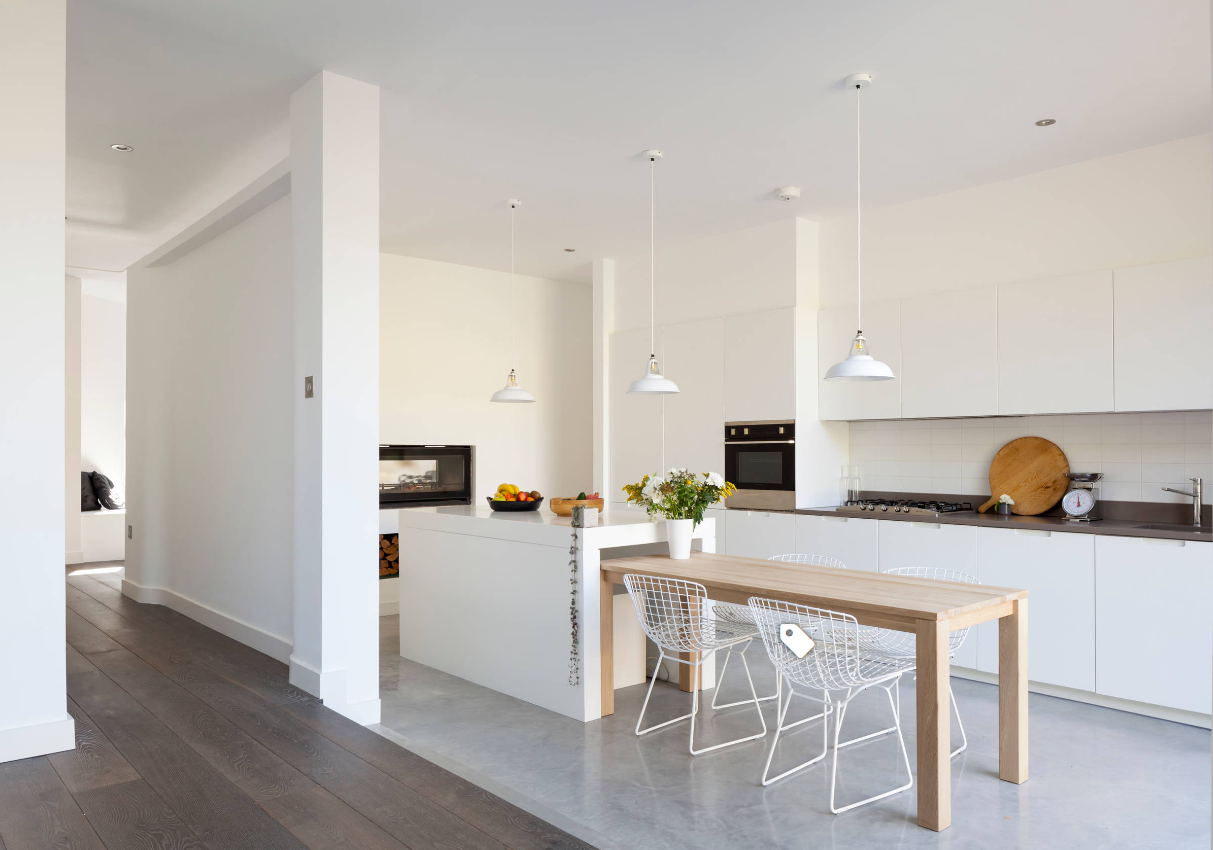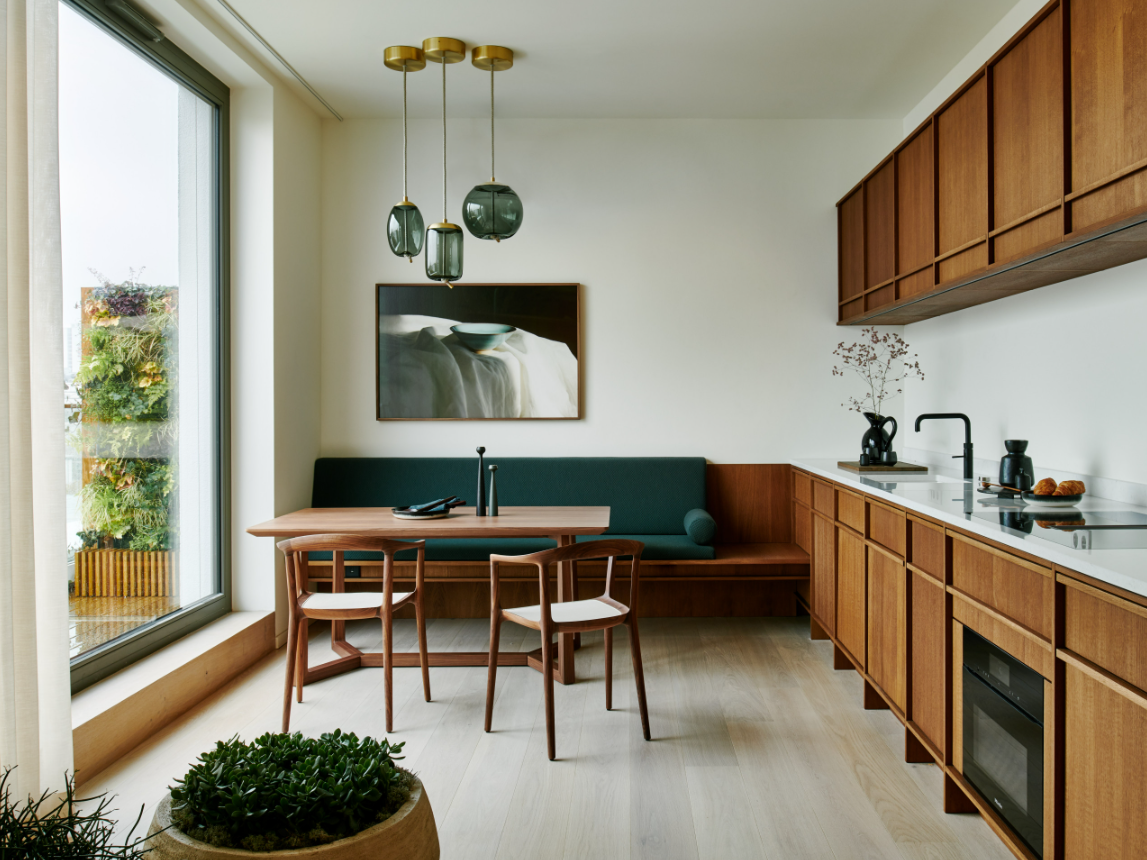Exploring the Tranquil Allure of Japanese Interior Design
When it comes to interior design themes, the Japanese interior style stands out as an exquisite blend of minimalism, elegance, and tranquility. Rooted in the principles of Zen philosophy and traditional Japanese culture, this design aesthetic captures the essence of simplicity while creating an atmosphere of serenity in living spaces. By incorporating natural elements, clean lines, and a harmonious color palette, Japanese interior design offers a unique approach to creating a balanced and peaceful environment within your home.
Photo by Blythe Interiors
Photo by CARLO - Architecture & Interior Design
What’s great about it
One of the most captivating aspects of Japanese interior design is its ability to transform a space into a sanctuary of calm and tranquility. The core principle of minimalism is evident throughout, with a focus on decluttering and only incorporating items that bring value and beauty to the space. The design encourages a sense of mindfulness and intentionality in the way you interact with your surroundings.
Natural materials play a crucial role in this theme, with an emphasis on utilizing wood, stone, and bamboo. These materials not only provide a tactile connection to nature but also exude warmth and authenticity, creating a harmonious and cozy atmosphere. The deliberate use of neutral color palettes, consisting of soft earthy tones and muted shades, fosters a soothing environment that promotes relaxation and introspection.
Japanese interior design is also known for its seamless integration of indoor and outdoor spaces. The use of large windows and sliding doors blurs the boundaries between the inside and outside, inviting an abundance of natural light and fresh air into the home. This connection to the outdoors enhances the overall sense of serenity and brings a touch of nature into your daily living experience.
What’s not so great about it
While Japanese interior design has numerous virtues, it might not be suitable for those who thrive in environments filled with bold colors and ornate decorations. The emphasis on minimalism and simplicity means that there is limited room for excessive ornamentation or vibrant hues. For individuals who enjoy a more eclectic or maximalist style, the restraint of Japanese interior design might feel too restrictive.
Additionally, creating an authentic Japanese interior can be a challenge if you're not well-versed in the cultural nuances and design principles that underpin the style. Striking the right balance between modern convenience and traditional aesthetics requires careful consideration and expertise. Achieving the minimalist look can also be challenging if you're used to having a significant amount of storage space, as the design encourages the removal of unnecessary items.
The Bedroom: Serene Retreat
Photo by PlaidFox Studio
Photo by SYNC INTERIOR PTE. LTD
The bedroom is a sanctuary of rest and tranquility in Japanese interior design. The design philosophy is reflected in the choice of furniture, with low platform beds often being the focal point. These beds are not only visually pleasing but also offer a sense of groundedness and proximity to the floor – a connection to nature that is central to this design style. The bedding is typically kept simple and comfortable, with a focus on natural materials like cotton and linen.
Minimalism extends to the bedroom's decor, with a few carefully chosen elements such as a traditional shoji screen or a single piece of artwork. These elements create a sense of balance without overwhelming the space. Soft lighting, provided by pendant lights or floor lamps, enhances the soothing ambiance of the bedroom, contributing to a peaceful night's sleep.
The Living Room: Zen Harmony
Photo by SEKI DESIGN STUDIO
Photo by Mark Brand Architecture
In the living room, Japanese interior design fosters an inviting space for relaxation and contemplation. The use of tatami mats, which are traditional woven straw mats, creates a unique seating area that aligns with the design's emphasis on nature and simplicity. Low furniture, such as floor cushions and coffee tables, encourages a relaxed posture and facilitates open conversations.
The living room often features elements like bonsai trees or ikebana arrangements, bringing a touch of nature indoors. Sliding doors or shoji screens can be used to divide the space and provide privacy when needed. A serene palette of neutral colors, complemented by the occasional pop of color from carefully chosen accessories, completes the tranquil atmosphere of the living room.
The Bathroom: Tranquil Escape
Photo by Morph Interior Ltd
Photo by Garret Cord Werner Architects & Interior Designers
The bathroom in a Japanese interior is designed to be a space of rejuvenation and mindfulness. Clean lines and minimalist aesthetics prevail, with a focus on creating a clutter-free environment. Soaking tubs, known as ofuro, take center stage, offering a luxurious and calming bathing experience. These tubs are often made from natural materials such as wood, promoting a connection to the earth.
The bathroom design emphasizes functionality, with ample storage solutions to keep toiletries out of sight. Natural light is optimized to create a well-lit space, and the use of neutral colors maintains the sense of tranquility that defines Japanese interior design.
The Kitchen: Functional Simplicity
Photo by CARLO - Architecture & Interior Design
Photo by Meredith Lee
The kitchen in Japanese interior design seamlessly blends form and function. While modern appliances are present, they are often integrated into the design to maintain a cohesive and uncluttered look. Clean lines and simple aesthetics extend to kitchen cabinets and countertops, with a preference for natural materials like wood and stone.
Open shelving allows for easy access to essential items, while carefully chosen kitchenware and utensils can serve as decorative elements. The kitchen space is designed to promote efficient and mindful cooking, aligning with the principles of simplicity and intentionality that define Japanese interior design.
To sum it all up
Japanese interior design offers a harmonious blend of simplicity, nature, and tranquility that can transform any living space into a serene haven. With its emphasis on minimalism, natural materials, and a neutral color palette, this design concept encourages mindfulness and intentionality in every aspect of daily life. While it might not suit those who prefer vibrant colors and elaborate decor, it provides a unique opportunity to create an oasis of calm in the midst of a bustling world. Whether you're designing a bedroom, living room, bathroom, or kitchen, the Japanese interior concept invites you to embrace the beauty of simplicity and find solace in the refined elegance of this timeless design aesthetic.
Build your home with us
Elevate your space. Experience timeless elegance and personalized refinement with our exquisite interior design concepts. Let us bring your vision to life.
Our Culture
Design before Deposits, before settling down with any firm.
resources
We value add our clients with non-obligatory contractors resources.
Fixed Rate
All our services comes with a transparent price tag.
extra mile
We went extra mile to service our valuable clients whole-heartedly.
The above images are for design reference purposes only. We do not own any of the designs, projects, or any proposal on this page.
Zero markup from interior designers
Typically, hiring an Interior Designer for renovation is charged a fee determined by a percentage of the project cost. On the other hand, an Interior consultant charges a fixed fee instead.
Reduce risk of miscommunication
Communication and management are crucial when it comes to renovation. Therefore, over at JIAHOME, you will receive professionally rendered 3D drafts, and 2D layout plans to avoid any sort of miscommunication.
Visualise your home before contracts
We understand very often homeowners are taking a leap of faith that the Interior designers or contractors understand what they wanted. By consulting JIAHOME will reverse the process with visualization first, followed by project management; with a choice of self-coordination.





















